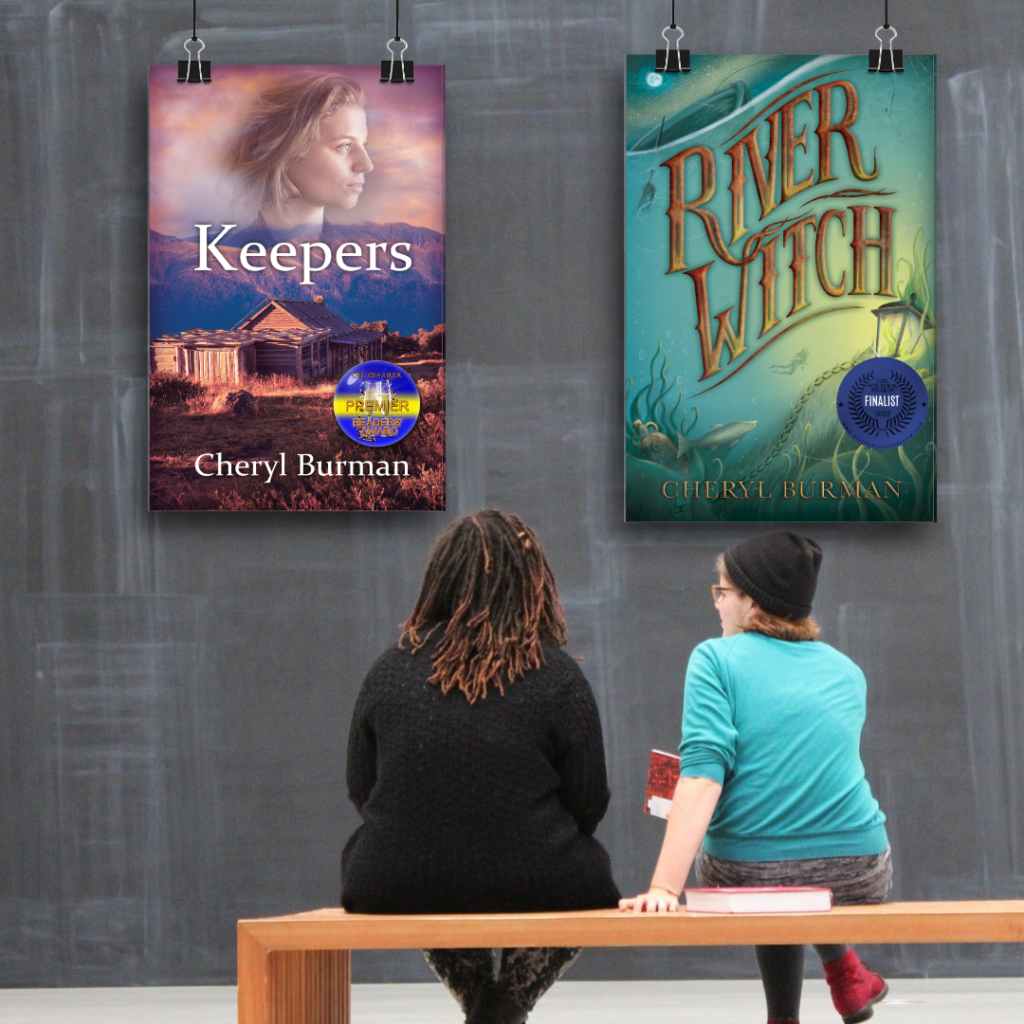What this post is and is not
Four guidelines for effective use of research in your novel is not concerned with how to go about doing your research. There’s lots of help out there about that. What this post is about is how that research gets translated into our novels to create feasible, authentic worlds and characters in which readers become immersed – without feeling they are being taught a history lesson (in the case of historical fiction) or force fed an abundance of ‘what it was like back then’. The same goes for other genres such as crime fiction.
Good examples
I’ve recently read some wonderful successful examples of this. Anthony Doerr’s All the Light We Cannot See (reviewed last month as my featured book) drips with historical facts, all of which combine seamlessly to create vivid, real settings. It also gives us characters who are believable, with values and sensibilities relevant to the time, as for example, Werner’s attitude to being in Hitler Youth and in the army. (A cautionary note: read the book, avoid the shallow Hollywood bowdlerised Netflix version – just my view!)

Other books which fall into this category for me include Mantel’s Wolf Hall trilogy – where I was so deeply into Cromwell’s world I did actually weep at the end – and Andrew Taylor’s Ashes of London series, where the pokey squalor of his London plays like a movie in your mind, with the added, dubious, benefit of smelling it.
Less successful examples
But I’m sure that, like me, you have read books where the research the author has undertaken is much more in your face. Rather than creating a seamless world, there’s something in every paragraph screaming at you: I researched this, therefore you will learn about it too. The impact for me is to slow the pace to sluggish, leave me feeling an outsider to the story, and in extreme cases to a Did Not Finish.
These books may well have a similar amount of researched detail as the ones I applauded above. However, for some reason it seems too much. One example is The Marriage Portrait by Maggie O’Farrell. I adore O’Farrell’s books but this one I merely sort of enjoyed, as much of it felt like a history lesson or a tour guide. Going back several decades, another example is Neville Shute’s On the Beach which I have recently read. A moving, frankly terrifying, tale, marred for me by whole paragraphs about the technicalities of weather systems, trout fishing, motor car racing and sailing.
What’s the difference?
What’s the difference between the first and second groups? Why do some work and others don’t? And how do we as writers decide what of all the great research we’ve carried out should be included and what should we abandon?
How to use research effectively

Researching this topic (ha, see what I did there?) and thinking about my own experiences, I’ve come up with four guidelines for effective use of research in your novel to help us writers keep on track.
Be relevant
Neville Shute may have become an expert on trout fishing, but for me, only the detail of the weather system is relevant in On the Beach as that is, of course, how the deadly radiation drifts inexorably south. And even so, I believe that could have been less technical, written about fewer times and in much less detail, but hey – they wrote differently in those days.
The point is, which bits of your research are directly relevant to the story. Use them, skip the rest.
As my good friend, historical fiction author Nina Romano says, in her recent novel Dark Eyes set in Stalinist Russia, knowing what torture methods were used during Stalin’s reign of terror was critical information to give her book authenticity (and the right amount of plausible horror too).
Be sparing
A couple of years back I read a traditionally published novel which dealt with herbal medicine and witchy things. I swear the author managed to get into that book every ounce of herbal lore and every old wives’ tale she had unearthed in her undoubtedly thorough research. While interesting to me, as a reader I felt most of it was included because the author knew it. And that was the only reason. These titbits ended up sticking out like stains on a tablecloth, diminishing the overall impact of the story.
Learning a lesson, for River Witch I researched the history and attributes of wise men and women. There were only two aspects I used. One: that wise men tended to be quite well educated; and two, that women generally inherited their spiritual and healing gifts from their female forebears. For the rest, I wrote a blog post about it which let me tell readers I’d done my homework without pushing it in their faces.
Create credibility with broad brush strokes
We want our readers to feel the ring of truth about our worlds and characters. So we go to a great deal of effort to find out what they ate, what they wore, how the kitchen worked and all the trivia of daily life. As we should.
The secret here is to become sufficiently familiar with these details that we can write a scene where a few simple brush strokes paint the picture for our reader. I discovered with River Witch that I had no idea how people farmed in the late 1800s, and only a hazy idea of the tenant farmer/landlord relationship. Both were relevant to the story and important to get right. I researched information such as where cows were kept in winter and how they were milked, which crops were sown when, and how they were harvested. And then did my best to use the correct terminology, the correct crops in the relevant scenes and so on – a sentence here and there, not a lesson in 19th century farming.
Another way to create credibility with subtle brush strokes is to research and incorporate real people into scenes with our characters as their attitudes and views are contemporary and will reinforce authenticity. Again quoting Nina Romano: In The Secret Language of Women I used two people who really lived during the time I set the novel. I put these people in scenes with my main character. Everything I used was invented in the dialogue, but I felt I knew these people as I looked up and read their histories and stories.
Underpin the plot
This is an extension of being relevant but in a more proactive way, using your research to reinforce the plot and your characters’ motivations and development. As a child in Australia, we often went to a fun fair by the beach, and I wanted to incorporate this bit of personal history into Keepers. The day that Raine spends there with Teddy, Alf and their friends, ends with a roller coaster ride. While in itself a perfect metaphor for their relationship, by adding in Raine’s own emotions at how she felt about the scary ride and with whom she would share a seat, I deepened the metaphor.
How do we do put this into practice?
One suggestion I came across was to highlight the bits of research used in each scene to identify if there’s too much, or possibly not enough (have you set your historical period for example?)
If there’s a great deal, ask:
- If I take this fact out, does it reduce the credibility of the world I’ve created? Note that this is different from: If I keep it in, does it add to the credibility? Because the answer to that question will be yes, and the next thing you know, you have a book of interesting facts – as per the herbal lore novel I referred to above.
- Does this piece of research support the plot and my characters’ journeys?
- Do I need to include ALL the detail I’ve discovered?
If the answer is No to any, get out the editing pen and go to work.
My own approach
Here’s where I confess I am not a detailed researcher. Occasionally I might go down a rabbit hole, but I’m not one to read twenty books around my subject. I’d rather be writing, for better or worse.
What works for me is to –
- Carry out general relevant research (eg for Keepers, the history of post WW2 migrants to Australia and how they were accommodated, or for River Witch, fishing and also smuggling on the Severn, in general terms)
- Start writing, and when I get to a bit where I think: How did that happen then? What movies were playing in that year? How did petrol rationing really work in Australia? I google those specific topics, and keep writing. (Update 2024: Or ask ChatGPT, which is brilliant at answering these questions to which we just need a simple answer.)
- As mentioned earlier, I love to write up interesting background as blog posts to share with readers. Find them here.

How do you know if you’ve succeeded?
Waiting for the reviews is one way, but long before the writer gets to that point, we can test success for ourselves. I resonated with this quote from a blog post by author Kim van Alkemade:
To create an immersive experience for our readers, our own experience as writers should ‘feel more like you are remembering things you’ve experienced than relating information you uncovered.’
I’d love to hear your views on my four guidelines for effective use of research in your novel, and what you’ve learned in how to pick and choose what research you include in your novels. This is very much a work in progress for me, so all comments welcome!
Liked this post? Feel free to share it –
Four guidelines to using research in your novel
Tweet
More writing tips here. Use the search button at the bottom of the screen to check out specific topics.
Lol. As a writer who DOES read twenty books before writing mine, I identify with that statement. However, I also learned the hard way when I had to cut 10,000 words from my manuscript, the “lesson” aspect of all that glorious knowledge is neither needed nor wanted by the reader. Dropping in the salient facts is sufficient, though it hurts to leave those parts behind.
Precisely! Thanks for responding! Put the most interesting bits of the rest into blog posts – great pre and post-publicity for your books.